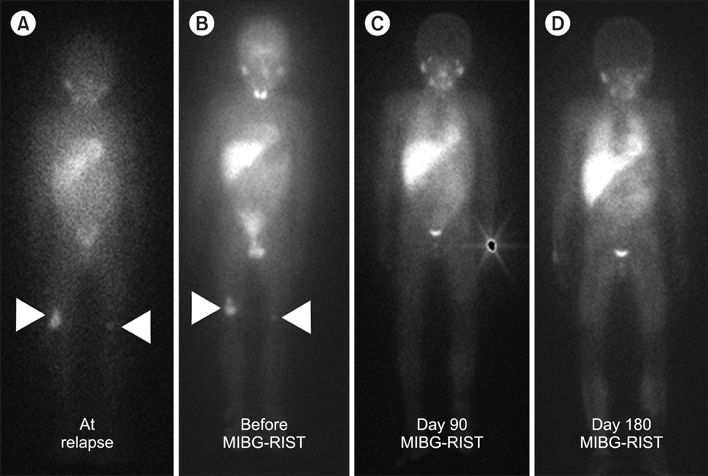Korean J Hematol.
2012 Mar;47(1):3-5. 10.5045/kjh.2012.47.1.3.
Allogeneic stem cell transplantation for neuroblastoma
- Affiliations
-
- 1Department of Pediatrics, Samsung Medical Center, Sungkyunkwan University School of Medicine, Seoul, Korea.
- KMID: 2251963
- DOI: http://doi.org/10.5045/kjh.2012.47.1.3
Abstract
- No abstract available.
Figure
Reference
-
1. Inoue M, Nakano T, Yoneda A, et al. Graft-versus-tumor effect in a patient with advanced neuroblastoma who received HLA haplo-identical bone marrow transplantation. Bone Marrow Transplant. 2003. 32:103–106.
Article2. Blaise D, Bay JO, Faucher C, et al. Reduced-intensity preparative regimen and allogeneic stem cell transplantation for advanced solid tumors. Blood. 2004. 103:435–441.
Article3. Takahashi H, Manabe A, Aoyama C, et al. Iodine-131-metaiodobenzylguanidine therapy with reduced-intensity allogeneic stem cell transplantation in recurrent neuroblastoma. Pediatr Blood Cancer. 2008. 50:676–678.
Article4. Toporski J, Garkavij M, Tennvall J, et al. High-dose iodine-131-metaiodobenzylguanidine with haploidentical stem cell transplantation and posttransplant immunotherapy in children with relapsed/refractory neuroblastoma. Biol Blood Marrow Transplant. 2009. 15:1077–1085.
Article5. Pérez-Martínez A, Leung W, Muñoz E, et al. KIR-HLA receptor-ligand mismatch associated with a graft-versus-tumor effect in haploidentical stem cell transplantation for pediatric metastatic solid tumors. Pediatr Blood Cancer. 2009. 53:120–124.
Article6. Jubert C, Wall DA, Grimley M, Champagne MA, Duval M. Engraftment of unrelated cord blood after reduced-intensity conditioning regimen in children with refractory neuroblastoma: a feasibility trial. Bone Marrow Transplant. 2011. 46:232–237.
Article7. Sung KW, Park JE, Chueh HW, et al. Reduced-intensity allogeneic stem cell transplantation for children with neuroblastoma who failed tandem autologous stem cell transplantation. Pediatr Blood Cancer. 2011. 57:660–665.
Article8. Lang P, Pfeiffer M, Müller I, et al. Haploidentical stem cell transplantation in patients with pediatric solid tumors: preliminary results of a pilot study and analysis of graft versus tumor effects. Klin Padiatr. 2006. 218:321–326.
Article9. Goi K, Inukai T, Honna H, et al. Successful tandem (autologous-cord blood) SCT in advanced neuroblastomas with highly amplified MYCN. Bone Marrow Transplant. 2011. 46:835–839.
Article
- Full Text Links
- Actions
-
Cited
- CITED
-
- Close
- Share
- Similar articles
-
- Palliative effect of (131)I-MIBG in relapsed neuroblastoma after autologous peripheral blood stem cell transplantation
- Two Cases of Generalized Vitiligo after Allogeneic Stem Cell Transplantation
- A case of pneumomediastinum combined with chronic graft-versus-host disease following allogeneic hematopoietic stem cell transplantation
- Treatment of high-risk neuroblastoma
- A Case of Ovarian-Relapse Sparing of the Marrow in a Patient with Acute T Cell Lymphoblastic Leukemia after Allogeneic Hematopoietic Stem Cell Transplantation


